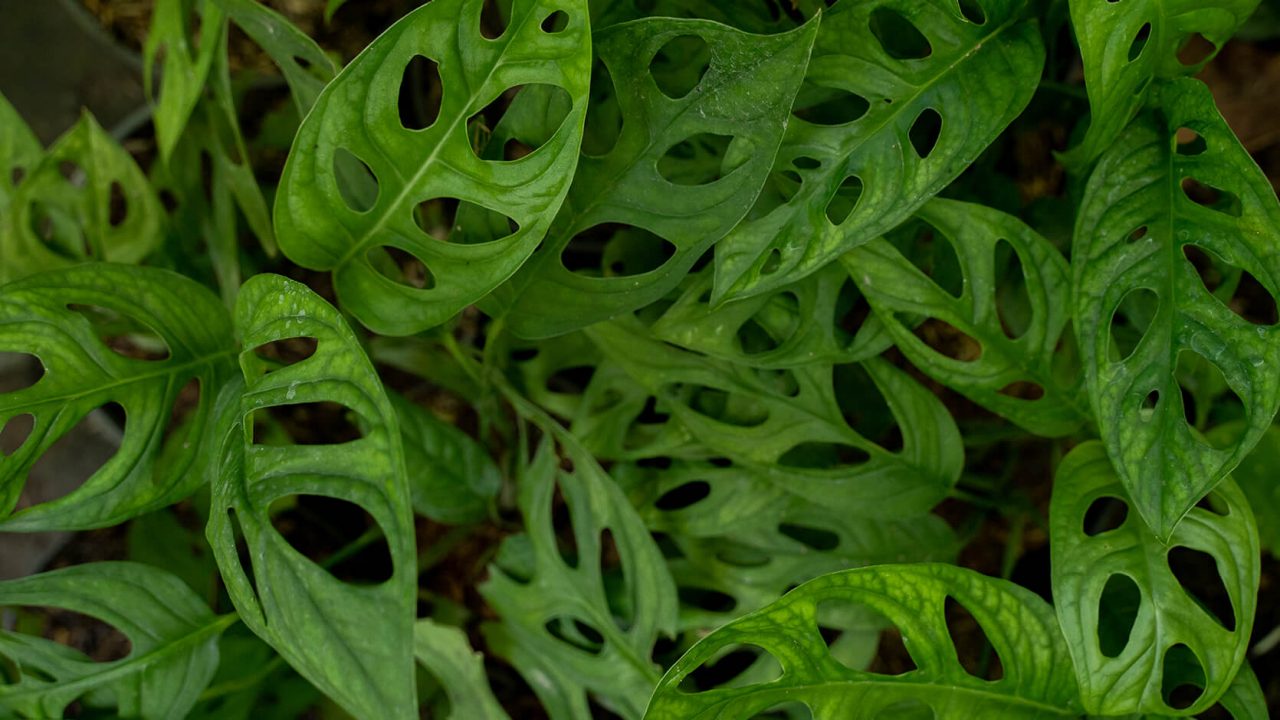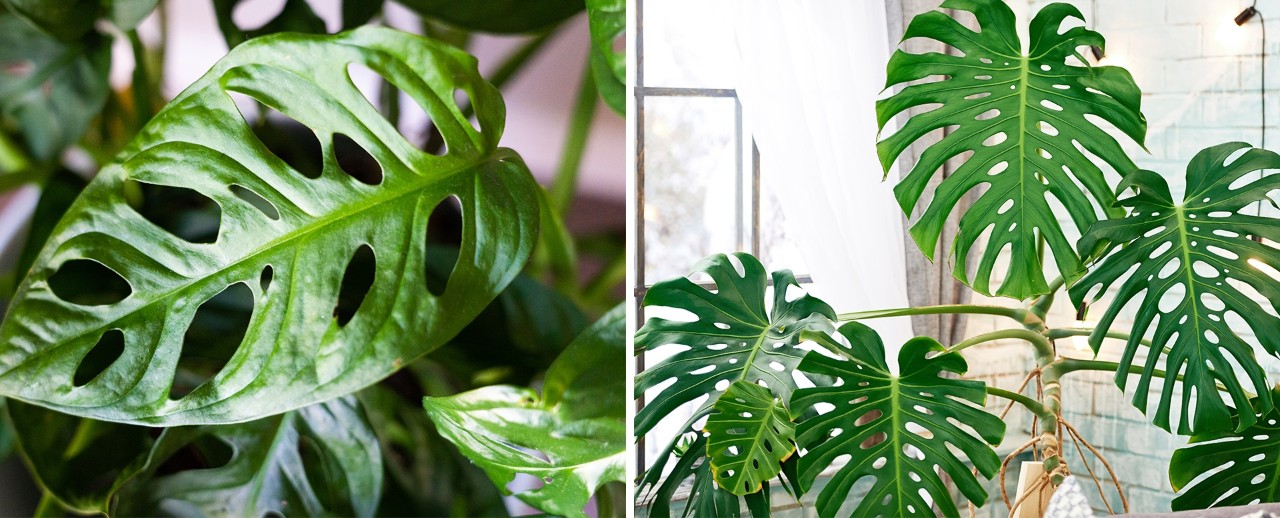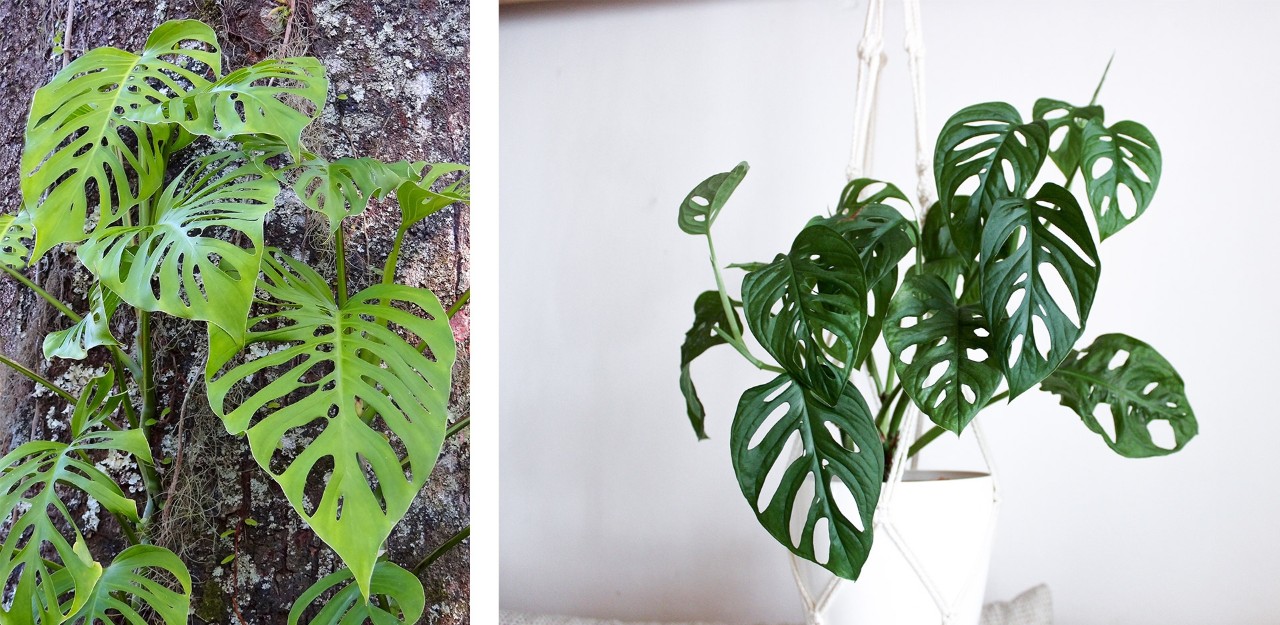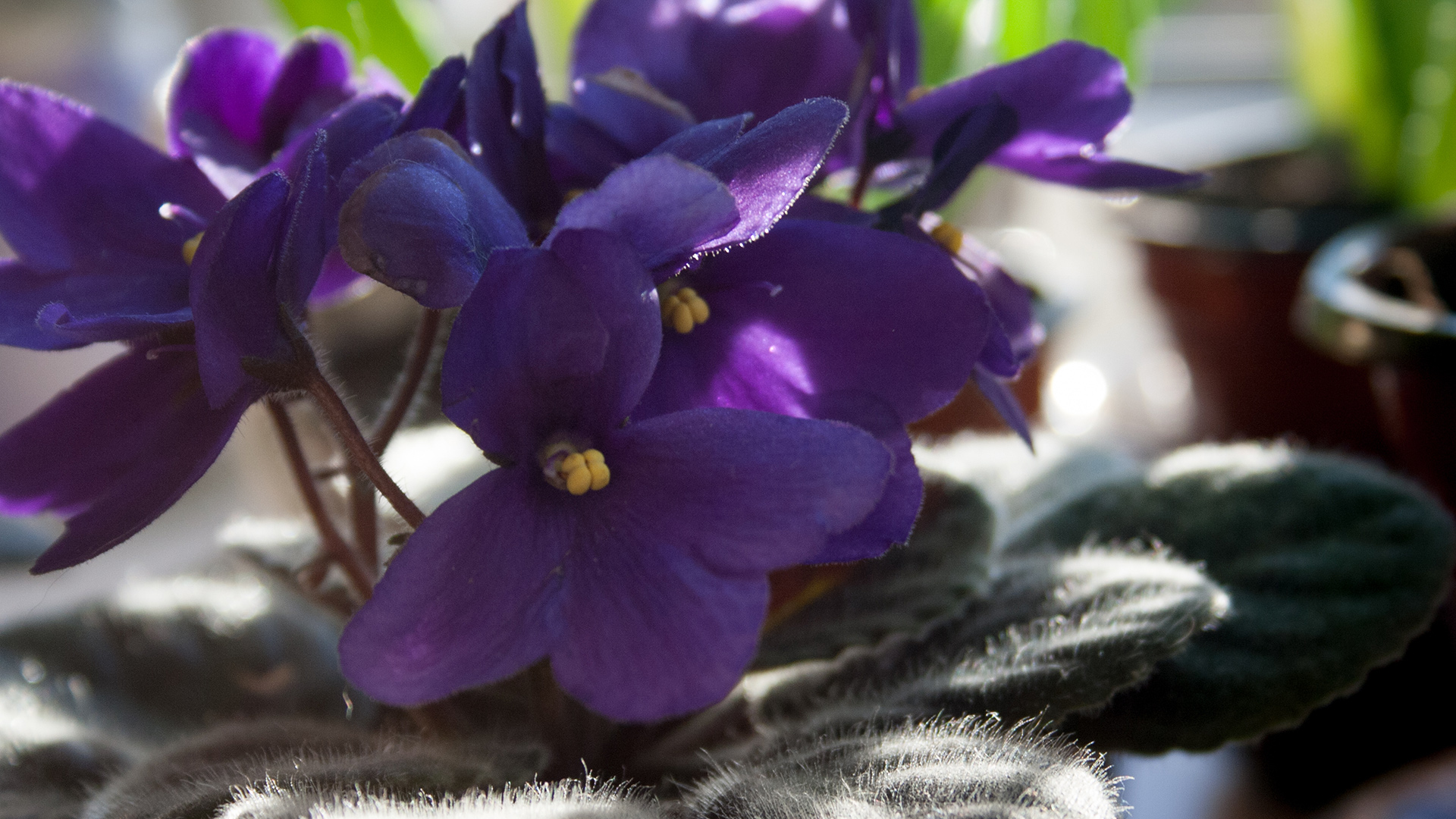Swiss Cheese Plant (Monstera adansonii)
 Foliage of swiss cheese plant
Foliage of swiss cheese plant
Known to be the ‘cheesiest’ of the two swiss cheese plants, Monstera adansonii can be easily differentiated – it has irregular, distinctive oval-shaped holes yet fully edged ornamental leaves. Its counterpart, Monstera deliciosa also known as swiss cheese plant, has indents on its broadly ovate leaves, with smaller fenestration close to the mid-rib of the foliage. To avoid confusion, these two swiss cheese plants are commonly referred to by their botanical names.
 Monstera adansonii (left), Monstera deliciosa (Right)
Monstera adansonii (left), Monstera deliciosa (Right)
Native to Central and South America, this Insta-worthy houseplant has been introduced into the homes of many collectors all around the world. In nature, the swiss cheese plant is a climber, and a great option as a trellis plant. When supported on a stake, it will grow taller, with its leaves getting larger (known as adult leaves). However, it is commonly sold as a hanging or potted plant in nurseries with its perforated, juvenile leaves cascading downwards.
 Semi-adult leaves of swiss cheese plant climbing on a tree trunk (left), Juvenile leaves of swiss cheese plant in a hanging planter (right)
Semi-adult leaves of swiss cheese plant climbing on a tree trunk (left), Juvenile leaves of swiss cheese plant in a hanging planter (right)
In Singapore’s context, the warmer temperatures and high humidity are just perfect for the swiss cheese plant. It will thrive under indirect light and in well-draining soil – do ensure that the planter has drainage holes to avoid waterlogging. This will be a good plant to start with if you are new to houseplants! Swiss cheese plants are available at most nurseries and even at the local supermarkets.
Why not try your hand at it?
| Botanical Name | Monstera adansonii |
|---|---|
| Common Name(s) | swiss cheese plant, swiss cheese vine |
| Plant Type | Climber or ground cover |
| Mature Size | 1 metre in height and 0.5 metres in spread (as a houseplant) 2 to 4 metres in height (in nature) |
| Light | Indirect light |
| Water | Let soil surface dry between periods of watering (ensure planter has drainage holes) |
| Soil | Well-draining soil |
| Flowers | Pale yellow spadix enveloped by white to cream-coloured spathes. Rarely flowers as a house plant. |
| Toxicity | All parts of plant contain calcium oxalate crystal – toxic when ingested. Poisonous to cats and dogs. |
Written by: Agatha Koh, Manager (Education, Programming & Events)
Agatha has spent the last ten years in a green paradise of every kind – greenhouses, orchards, food forests, therapeutic gardens, nature parks. Her days at the Gardens continue to be happily plant-filled as she shares her love for plants with fellow green thumbs and floral fanatics!



